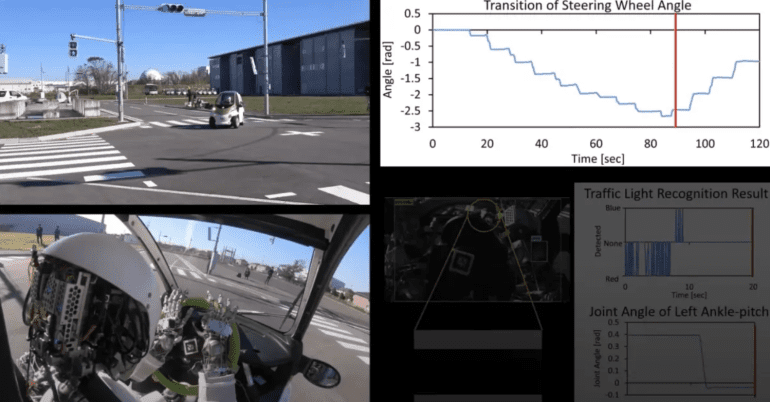- Researchers at the University of Tokyo propose humanoid robot drivers for autonomous vehicles.
- Their creation, Musashi, is a musculoskeletal humanoid trained to operate an electric car.
- Musashi utilizes cameras as eyes and mechanical hands for tasks like steering and signaling.
- Initial tests show promising results in navigating intersections and obeying traffic signals.
- Challenges include cautious driving behavior and difficulty maintaining consistent speed.
- Researchers plan to enhance both the robot and its software for future advancements.
Main AI News:
Is the solution to autonomous vehicle safety—a concern centered around pedestrian safety and collision avoidance—found in the form of a humanoid robot taking the driver’s seat? At the University of Tokyo, a team of researchers, including one affiliated with Toyota, proposes just that. In a recently published technical paper, they present their case.
Their creation, named Musashi, is no ordinary robot. It’s a musculoskeletal humanoid specifically designed and trained to operate a small electric car on a controlled test track. With its two cameras acting as eyes, Musashi perceives the road ahead and the surroundings reflected in the car’s mirrors. Its mechanical hands can perform tasks like turning the key, engaging the handbrake, and signaling turns. Moreover, Musashi’s anti-slip feet enable it to modulate the accelerator and brake pedals.
After extensive training with raw sensor data to understand steering, the researchers claim success in getting Musashi to navigate a corner at an intersection while obeying traffic signals. However, there are limitations. During the turn, Musashi cautiously lifted its foot from the brake, prolonging the maneuver to about two minutes due to technical constraints and safety considerations.
In another trial, Musashi struggled with maintaining a consistent speed, particularly on inclines. Despite these challenges, the researchers remain optimistic. They express readiness to tackle the hurdles, with plans to enhance both the robot and its software. Perhaps in the not-so-distant future, Musashi could be the one chauffeuring passengers in Tokyo’s taxis, marking a significant advancement in autonomous driving technology.
Conclusion:
The introduction of humanoid robot drivers for autonomous vehicles represents a significant step forward in automotive technology. While challenges remain, such as cautious driving behavior and speed control issues, the ongoing development and refinement of these systems suggest a promising future for safer and more efficient transportation solutions. This innovation could potentially reshape the automotive market, offering new opportunities for automation and enhancing passenger safety and comfort. Companies within the automotive industry should closely monitor these advancements and consider integrating similar technologies into their future products and services to remain competitive in an evolving market landscape.

